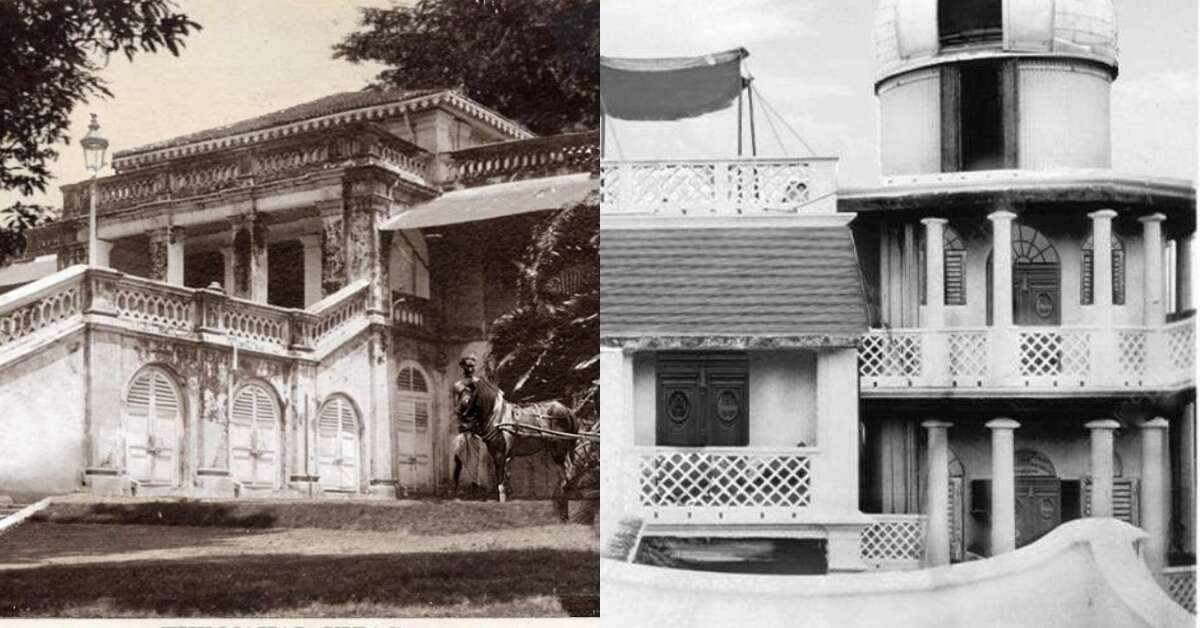

Visakhapatnam has seen the rise and fall of many remarkable structures throughout its history. While structures like Hawa Mahal, the Collector’s building, and more remain intact, many more historically important structures have been lost to time and forgotten. Here’s a look at five such historical landmarks of Visakhapatnam that no longer exist today:
In 1689, the British East India Company arrived in Vizag and set up a fort to solidify their presence. Built along a small river that separated the town from Dolphin’s Nose, the fort was open to the sea on the east and surrounded by hills. It served as the centre for the British settlement, with barracks, public buildings, and other facilities within its walls, while sepoy lines stretched toward Waltair.
The fort’s history is colourful but turbulent. After the English residents of Vizagapatam were attacked in 1689, this new fort was built, and in 1716, a farmin (an agreement) was obtained from the Emperor. Although the fort was captured by the French in 1757, it was soon recaptured by the Raja of Vizianagram and returned to the British.
Even with repairs, the fort was known for its poor construction and lack of defensibility. By the late 18th century, Vizagapatam’s southern tip was still referred to as the “Fort,” despite little fortifications remaining.
Thomas Bungalow was built in 1869 for Edward Croft Greenway Thomas, the Vizagapatam District Judge. Known as Thomas Folley to the locals, it was situated on the hill that is home to the Simhachalam Temple and is known as Simhachalam Hill today.
Thomas was deeply invested in Vizag’s growth; he advocated for the construction of a harbor, a water canal system, and eucalyptus trees for the hill. This bungalow was initially leased from the Maharajah of Vizianagram, who later used it as a summer residence.
Though Thomas returned to England in 1881, his contributions left an indelible mark on Vizag, and the bungalow served as a symbol of his dedication to the city.
The Jugga Row Observatory, constructed in 1841, marked Vizag as a pioneer in Indian observational astronomy. Founded by G V Juggarow, a noted astronomer, the observatory recorded data on comets, transits, and stellar events. It was a central hub for celestial photography and meteorological research. You can learn more about the internationally recognised findings of the observatory here
.Later managed by the Madras Government and Juggarow’s descendants, the observatory eventually ceased operations by the early 1900s. Its location in Daba Gardens, now replaced by the Dolphin Hotel, was one of the most important historical landmarks of Visakhapatnam.
The Mahal was the grand residence of the last king of Visakhapatnam – Maharajah Sir Goday Narayan Gajapathi Rao, a prominent Zamindar and the last in the influential Goday family line. Positioned near Godayvari Veedhi in Vizag’s Old Town, the Mahal stood as a symbol of aristocratic life. Gajapathi Rao, known for his philanthropy, donated extensively to religious, educational, and social causes in Vizag, including land for schools, hospitals, and public amenities. The ruins of the building were last seen in the 50s, according to local historian Edward Paul.
Known as the “Building of Winds,” the Gali Meda, or Hawa Mahal, was a striking circular tower. This round, 24-feet diameter structure was part of the historic Dutch Governor’s Bungalow. It served as a lookout point where officials could monitor the sea for weather changes, incoming ships, and potential enemy movements.
Appearing in several Telugu films, including Maro Charitra and Sreevariki Prema Lekha, this structure gained fame for its cinematic charm. Despite its popularity, years of neglect led to its demolition, leaving a gap in Bheemili’s heritage.
These historical landmarks bore witness to the past of Visakhapatnam and housed some of the city’s most important people. While these structures may no longer exist, their stories remain embedded in the story of Vizag. While we keep them in our memories, let this be a reminder of the importance of preserving heritage sites.
Stay tuned to Yo! Vizag website and Instagram for more heritage stories.
This post was last modified on 30/10/2024 2:04 pm
It's a new week, and there are some new and exciting developments in the world…
Gajuwaka, one of Visakhapatnam’s busiest and most rapidly growing neighbourhoods, is often seen primarily as…
Andhra Pradesh Chief Minister N Chandrababu Naidu has announced a major welfare initiative for women,…
A fire erupted at a steel plant in Visakhapatnam, Andhra Pradesh, following the spill of…
The election for the Deputy Mayor of the Greater Visakhapatnam Municipal Corporation (GVMC) has…
Two retired defence officers from Andhra Pradesh, Colonel K Srinivas and Captain C D N…
Leave a Comment